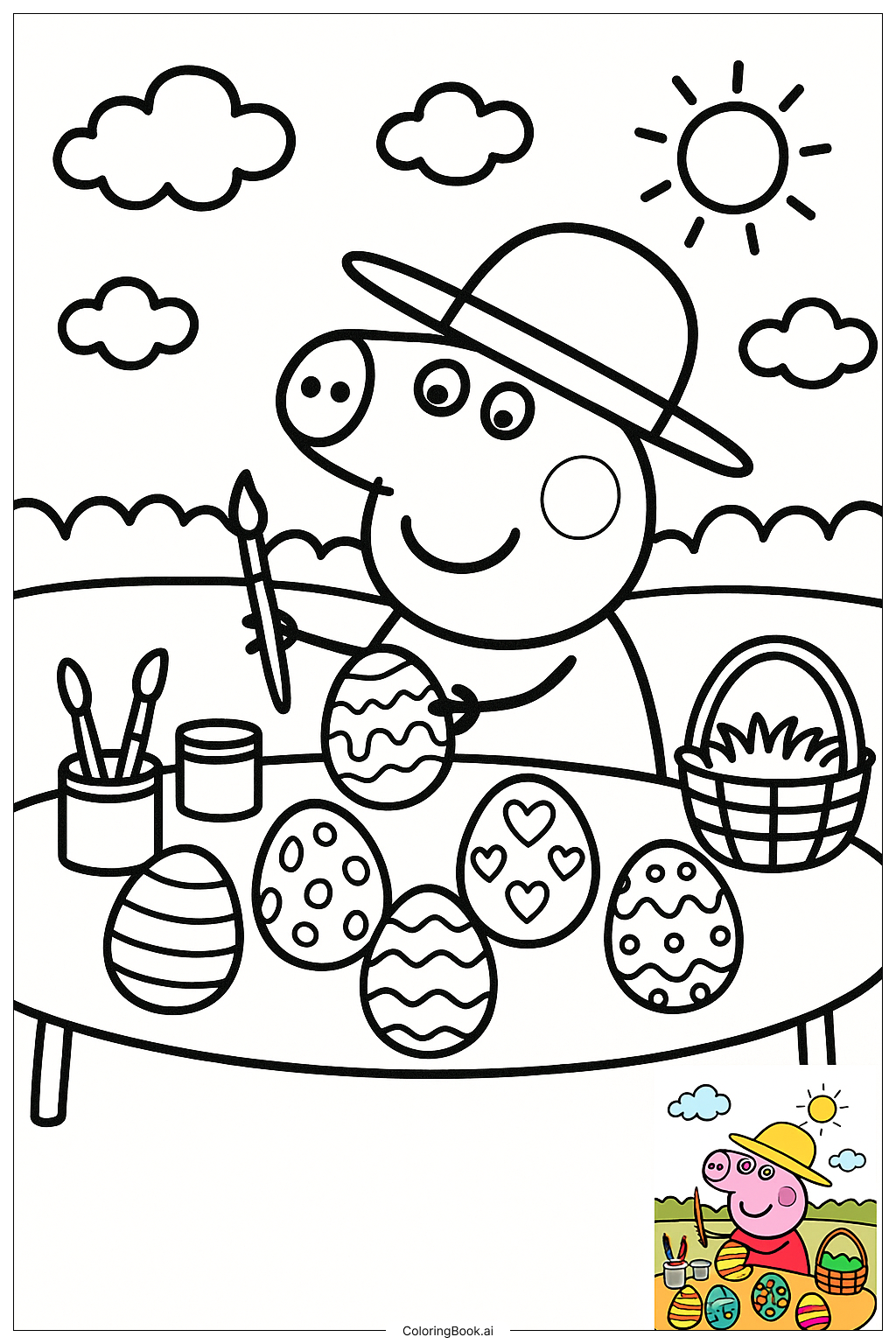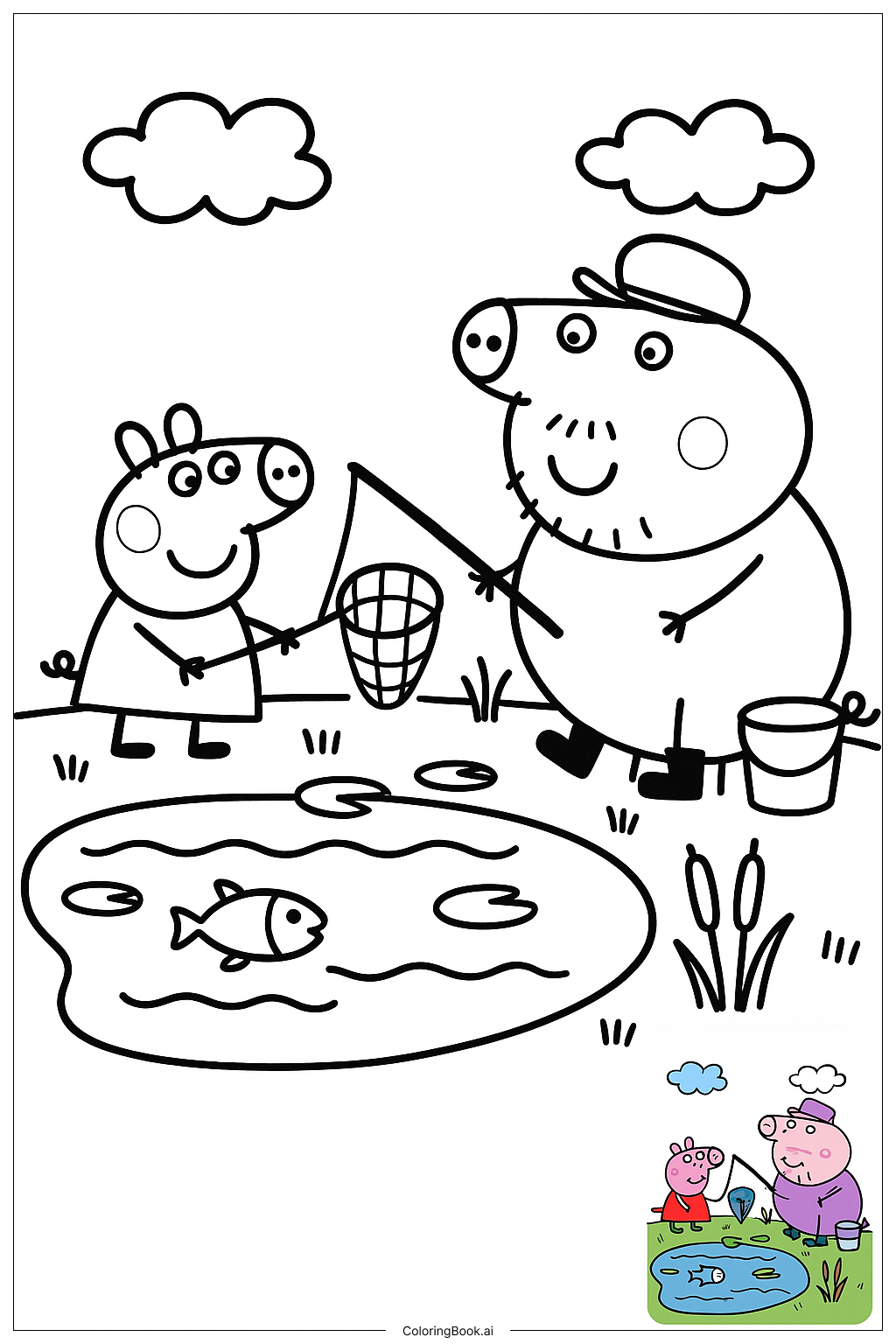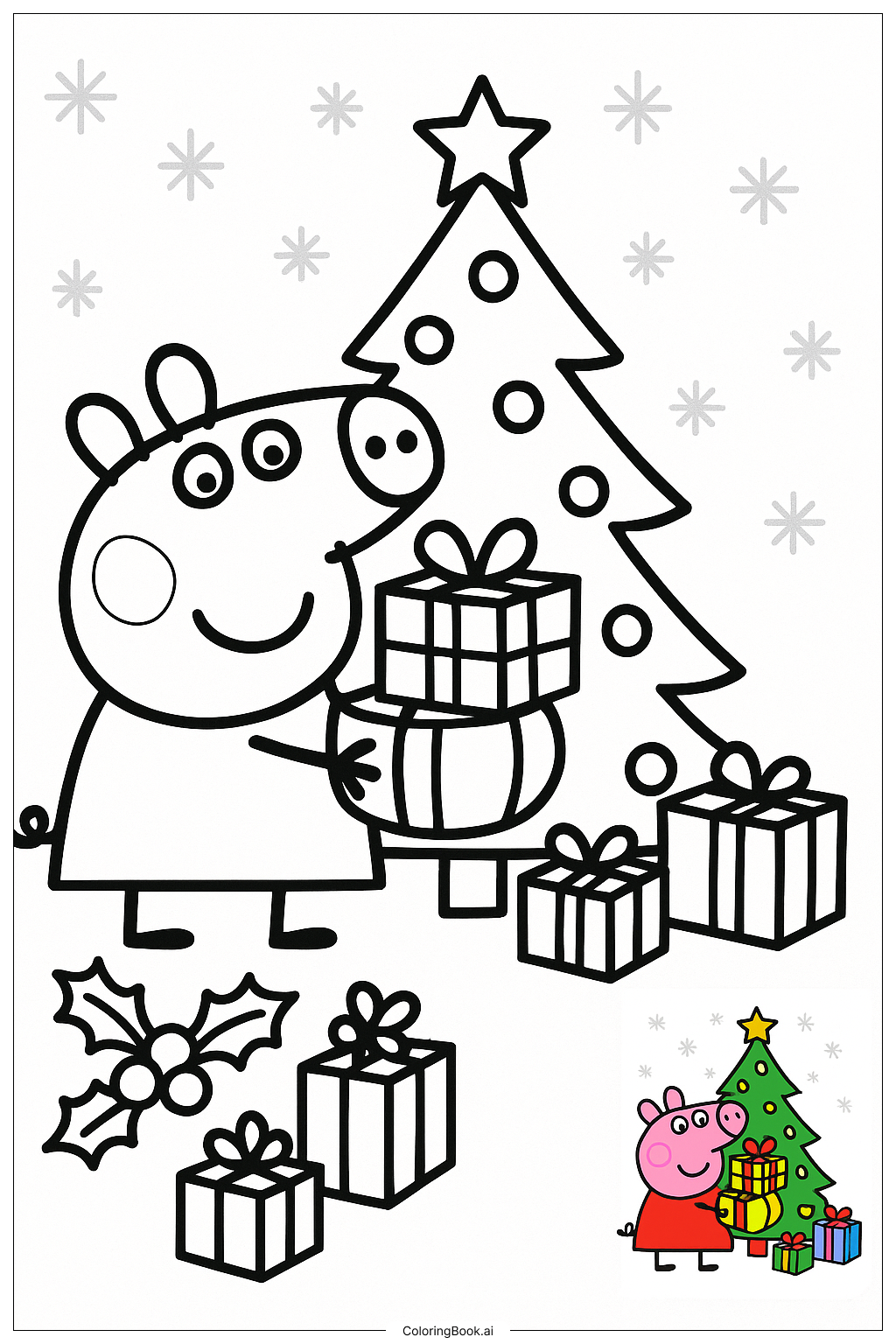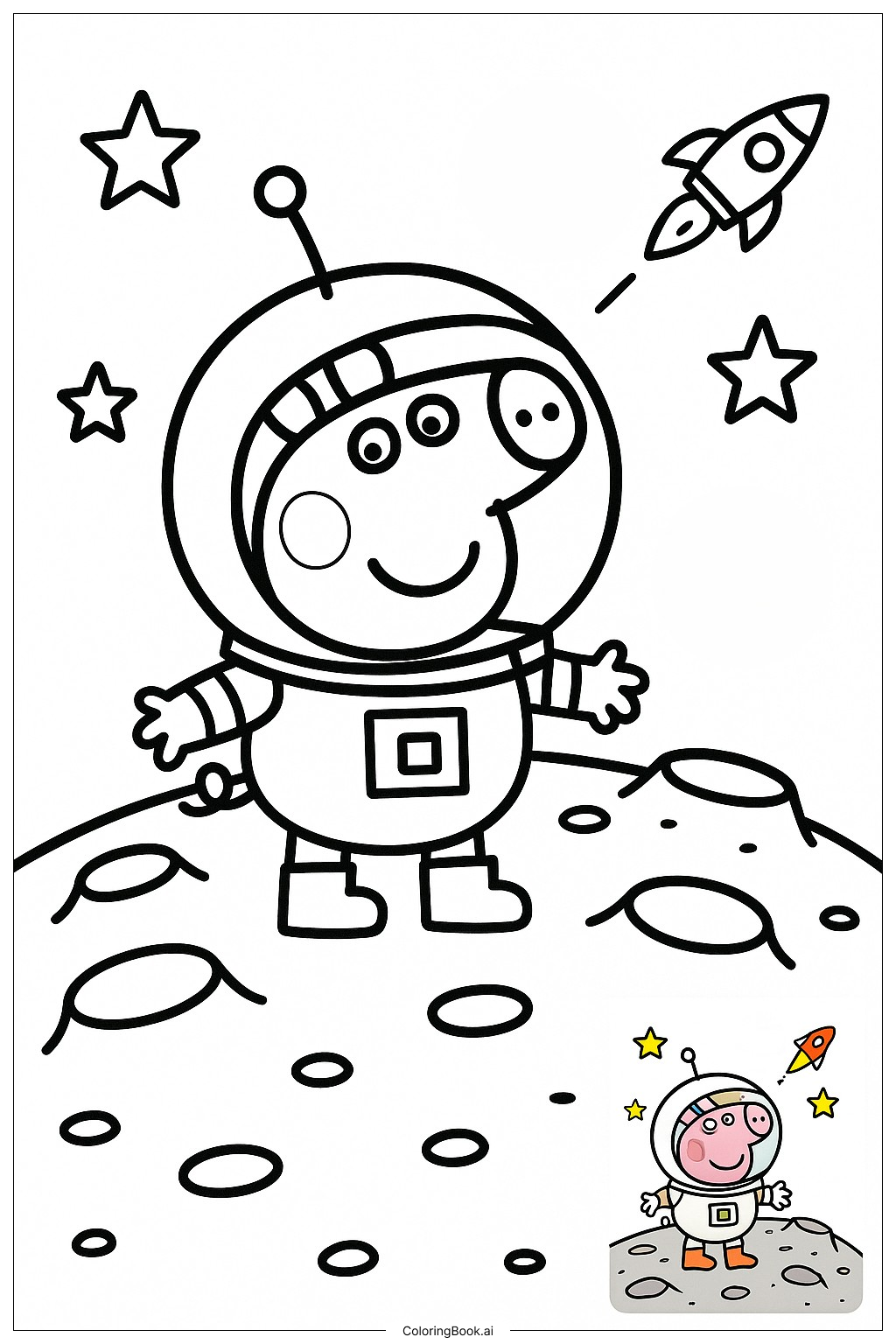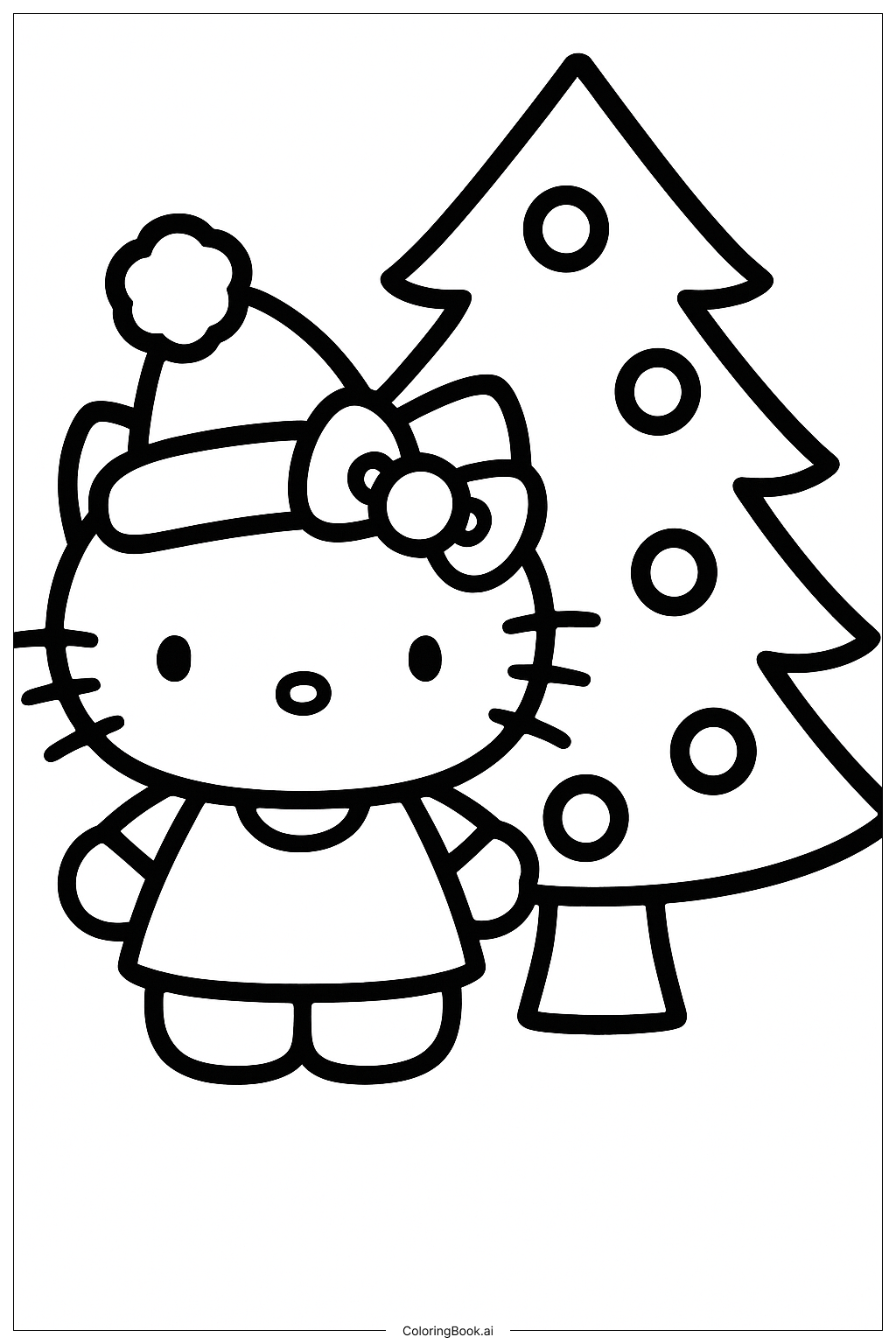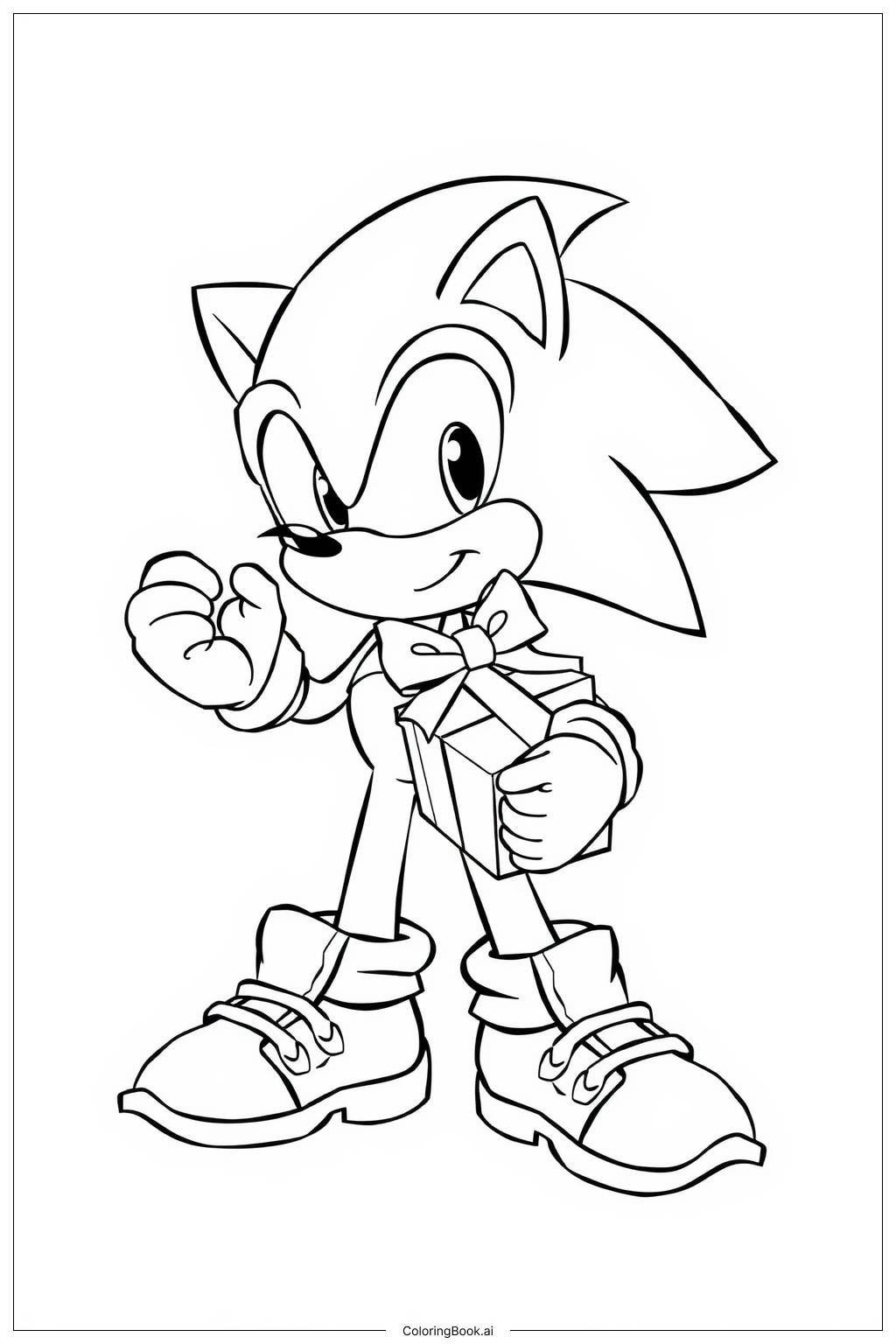Coloring tips: How to color Peppa Pig Decorating Easter Eggs coloring page well?
For coloring Peppa Pig, you might use pink for her body and a light brown for her hat. The eggs can be very colorful. Use bright colors like yellow, blue, green, and orange. Each egg can have different designs. For dots, use a bright color like red, and for stripes, use contrasting colors like blue and yellow. Don't forget to color the grass and the sunny sky! You can use green for the grass and light blue for the sky to make the scene more vibrant and cheerful. Let your imagination run wild!
Coloring challenges: Which parts are difficult to color and need attention for Peppa Pig Decorating Easter Eggs coloring page?
1. Intricate Patterns: Some of the Easter eggs have complex designs like hearts or stripes. These patterns require careful coloring, especially if you want to stay within the lines. It might be challenging for younger children or those new to coloring. 2. Color Choices: Deciding which colors to use for each egg can be tricky. Kids might struggle to come up with unique ideas or combinations that look good together. It's important to help them experiment to find colors they love. 3. Keeping the Lines: Peppa and the surrounding elements have thin lines that can be challenging to color without going outside the lines. This aspect demands a steady hand and concentration. 4. Blending Colors: Children might want to use multiple colors on a single egg to create a rainbow effect. Blending colors can be difficult and might require practice to get right. 5. Understanding Shadows: To make Peppa look more realistic, children can learn to add shadows by using darker shades. This concept is often not introduced until kids get older, making it a potential difficulty for younger kids.
Benefits of coloring books: Advantages of drawing Peppa Pig Decorating Easter Eggs coloring page
Coloring pages like this one are not just fun—they also offer several benefits! First, they improve fine motor skills. As children try to stay within the lines and use different coloring tools, they strengthen their hand muscles. Secondly, coloring helps boost creativity. Kids can choose their own colors and patterns, allowing them to express themselves and showcase their artistic talents. Furthermore, it encourages focus and concentration. When coloring complex designs, children learn to concentrate on tasks, which can help in their academic life too. Finally, completing a coloring page gives a sense of achievement. It boosts self-esteem and encourages children to tackle more challenging tasks in the future. Coloring is a wonderful activity that combines fun with learning!
